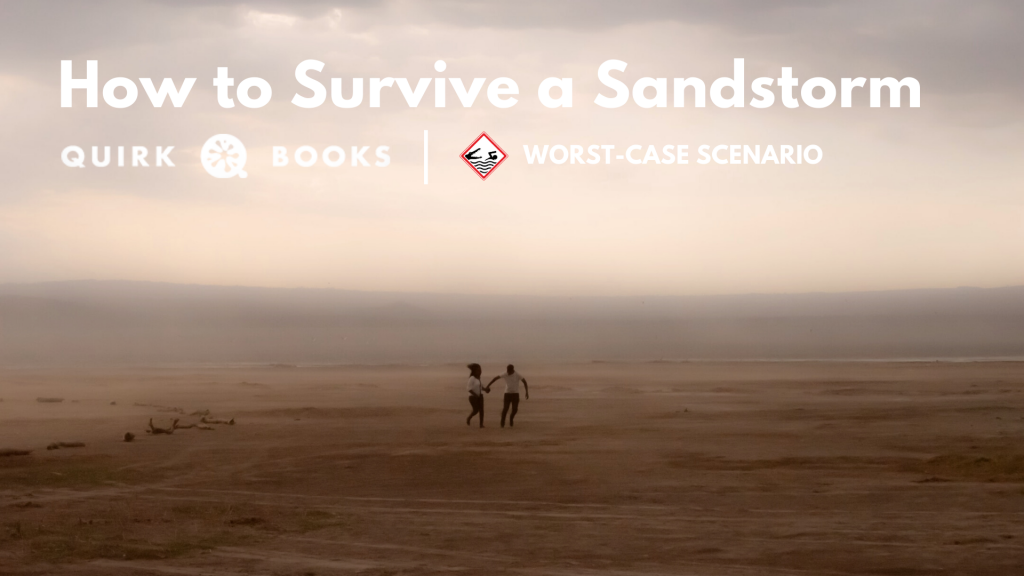Summer Survival Week: How to Survive a Sandstorm
(Header image by elCarito on Unsplash)
Sandstorms are indeed real—although they don’t usually come about as a result of an ancient curse like in The Mummy. Here’s what to do if you are caught in one.

HOW TO SURVIVE A SANDSTORM
- Wet a bandanna or other cloth and place it over your nose and mouth.
- Use a small amount of petroleum jelly to coat your nostrils on the inside:
The lubricant will help to minimize the drying of mucous membranes.
- All members of a group should stay together:
Link arms or use a rope to avoid becoming separated during the storm and to keep track of group members who might become injured or incapacitated.
- If driving in a car, pull off the road as far as possible on the shoulder:
Turn off your lights, set the emergency brake, and make sure your taillights are not illuminated. Vehicles approaching from the rear have been known to inadvertently leave the road and collide with the parked car. Keeping your taillights out will help to avert this danger.
- Try to move to higher ground:
Sand grains travel across the surface of the earth mostly by saltation, or bouncing from place to place. Because grains of sand will not bounce high on grass, dirt, or sand, moving to solid high ground is advisable, even if it's just a few feet higher. However, sandstorms can be accompanied by severe thunderstorms, and there may be a risk of lightning. If you hear thunder or see lighning during a sandstorm, do not move to higher ground.
BE AWARE
- Whenever you are in an area with sandstorm potential (basically, anywhere that there is a lot of sand and wind), wear long pants, socks, and shoes. Because of the way sand moves, your feet and lower legs are more likely to be "burned" by the abrasion of sand than the upper part of your body.
For more Worst-Case Scenario content, go to WorstCaseScenario.com!
(Excerpt from The Worst-Case Scenario Survival Handbook: Travel.)




